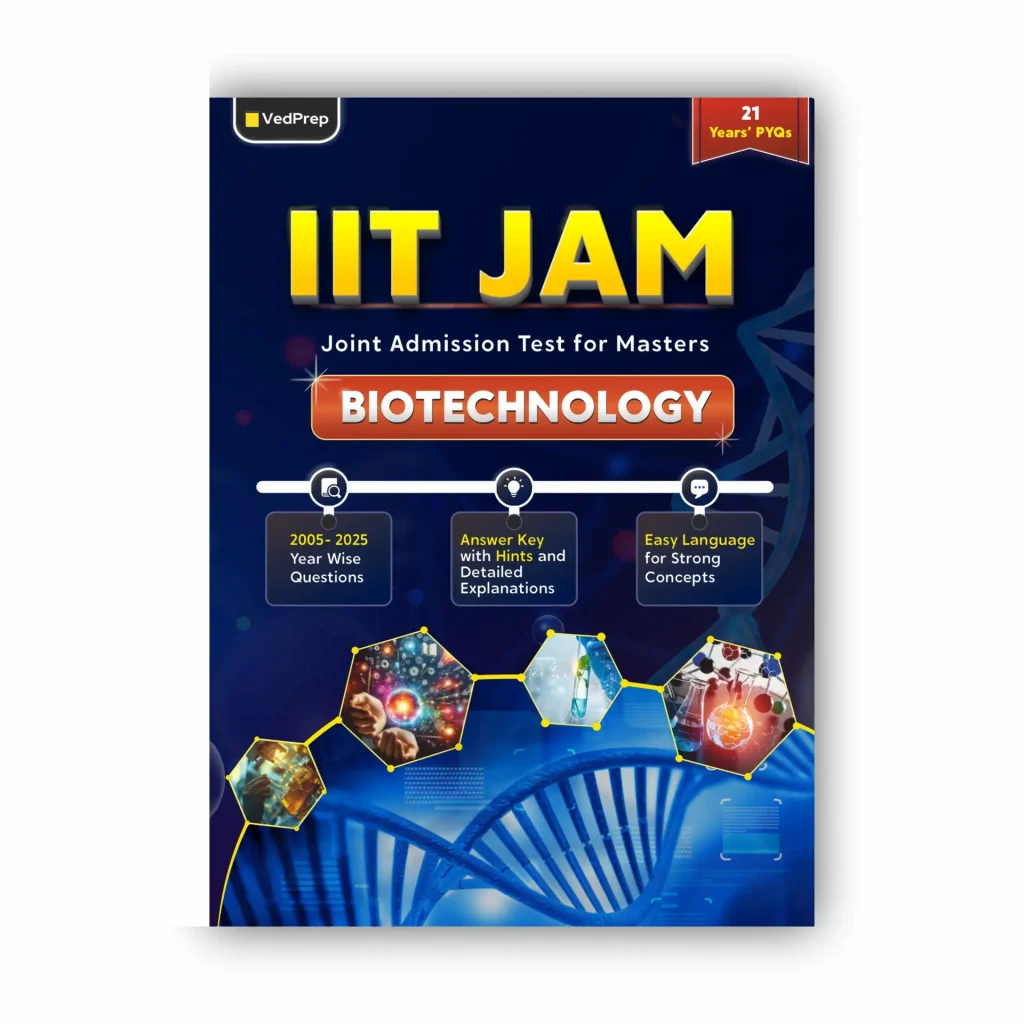The CSIR NET Earth Science syllabus plays a vital role in guiding candidates through the important units, concepts, and topics they must study to score well in the exam. A thorough understanding of the syllabus helps aspirants plan their study routine, focus on high-weightage topics, and approach the exam with confidence.
The Council of Scientific and Industrial Research (CSIR) NET, commonly known as CSIR UGC NET, is a prestigious national-level examination conducted by the National Testing Agency (NTA). The exam determines the eligibility of candidates for Junior Research Fellowship (JRF) and Lectureship/Assistant Professor positions in colleges and universities across India.
Also read – CSIR NET Exam Analysis 2025: Subject-wise Difficulty, Good Attempts & Paper Insights
CSIR NET Earth Science Exam 2025 Exam Schedule
To help candidates plan effectively, the CSIR NET Earth Science Exam 2025 schedule has been officially released.
| Details | Information |
| Exam Name | CSIR NET Earth Science (December 2025) |
| Exam Date | 18 December 2025 |
| Exam Mode | Computer-Based Test (CBT) |
| Exam Shifts | Two Shifts (Shift not yet confirmed for Earth Science) |
| Shift 1 Timing | 9:00 AM – 12:00 PM |
| Shift 2 Timing | 3:00 PM – 6:00 PM |
CSIR NET Earth Science Exam Pattern
Knowing the CSIR NET Earth Science exam pattern is the first step toward efficient preparation and achieving a good score.
| Paper Part | Total Questions | Questions to be Attempted | Marks |
| Part A | 20 | 15 | 30 |
| Part B | 50 | 35 | 70 |
| Part C | 80 | 25 | 100 |
| Total | 150 | 75 | 200 |
CSIR NET Earth Science Marking Scheme
A detailed look at the CSIR NET Earth Science marking scheme helps candidates understand how marks are awarded and deducted.
| Particulars | Part A | Part B | Part C | Total |
| Total Questions | 20 | 50 | 80 | 150 |
| Maximum Questions to be Attempted | 15 | 35 | 25 | 75 |
| Marks for Each Correct Answer | +2 | +2 | +4 | – |
| Maximum Marks | 30 | 70 | 100 | 200 |
| Negative Marking (per wrong answer) | –0.5 | –0.5 | –1.32 | – |
CSIR NET Earth Science Exam Pattern Minimum Qualifying Marks
After understanding the exam pattern and marking scheme, it’s crucial to know the minimum qualifying marks required to clear the CSIR NET Earth Science exam.
To be eligible for Junior Research Fellowship (JRF) or Assistant Professorship (AP), candidates must score equal to or above the minimum qualifying percentage set by CSIR. Achieving this benchmark is essential; failing to meet it will result in disqualification from further eligibility, regardless of performance in individual parts of the exam.
Minimum Qualifying Marks CSIR NET Earth Science
To determine eligibility for JRF and Assistant Professor, candidates must understand the minimum qualifying marks for CSIR NET Earth Science.
| Category | Minimum Qualifying Marks |
| General / EWS / OBC | 33% |
| SC / ST / PwD | 25% |
Also check – How to prepare for CSIR NET Earth Science Preparation : A Complete Guide for Aspirants
CSIR NET Earth Science Syllabus PDF Download
CSIR NET Earth Science syllabus is designed for postgraduate students aiming for research or academic careers in geosciences. It covers all major areas of Earth Science, including Geology, Geophysics, Geochemistry, Meteorology, Oceanography, and Environmental Science. The syllabus ensures candidates are tested on their conceptual understanding, analytical skills, and research aptitude, making it a comprehensive guide for preparing for one of India’s premier national-level exams in Earth Sciences.
CSIR NET Earth Science Syllabus PDF Download
The syllabus has been designed to help students understand the depth and structure of the Earth Science paper. Since it is available in a downloadable PDF format, candidates can refer to it anytime during preparation for quick revision and better planning.
Download CSIR NET Earth Science Syllabus 2025 PDF
| CSIR NET Syllabus Earth Sciences | Download PDF |
CSIR NET All Syllabus PDF
The official CSIR NET 2025 syllabus PDF for all subjects (including General Aptitude – Part A, Life Sciences, Mathematical Sciences, Chemical Sciences, Physical Sciences, and Earth Sciences) can be downloaded directly from the link given below or the NTA or CSIR HRDG websites.
| CSIR NET Syllabus PDF | |
| Subjects | Download Link |
| CSIR NET Syllabus Life Sciences | Download PDF |
| CSIR NET Syllabus Mathematical Sciences | Download PDF |
| CSIR NET Syllabus Chemical Sciences | Download PDF |
| CSIR NET Physical Science | Download PDF |
| CSIR NET Syllabus Earth Sciences | Download PDF |
CSIR NET Earth Science Syllabus for Part A
Part A of the CSIR NET exam is common for all subjects, including Earth Science. This section evaluates a candidate’s general aptitude, with a strong focus on:
CSIR NET Earth Science Syllabus for Part A General Aptitude
The Part A syllabus is common for all CSIR NET subjects. It tests candidates’ logical reasoning, numerical ability, and analytical skills. Below is the structured syllabus:
Part A Syllabus Table
| Name of Section | Sub-Topics |
| Quantitative Aptitude | Profit and Loss, Number Systems, Graphs, Permutations & Combinations, Algebra, Percentage, Area, Simple & Compound Interest, Average, Ratio & Proportion |
| Reasoning | Similarities & Differences, Graphic Analysis, Analogies, Directions, Coding–Decoding, Data-based reasoning, Analytical Reasoning, Symbols & Notations, Non-verbal Reasoning, Number Series, Blood Relations, Visual Ability |
| Data Interpretation and Data Analysis | Graphical Analysis, Mean, Median, Mode, Measures of Dispersion |
CSIR NET Earth Science Syllabus Part B
Part B of the CSIR NET Earth Science syllabus tests subject-related knowledge of Earth, atmospheric, ocean, and planetary sciences. Below is the structured unit-wise syllabus:
Click here to download CSIR NET Previous Year Question Papers PDF.
CSIR NET Earth Science (Paper I, Part B) syllabus:
EARTH. ATMOSPHERIC, OCEAN AND PLANETARY SCIENCES PAPER I (PART B)
- The Earth and the Solar System:
Milky Way and the solar system. Modern theories on the origin of the Earth and other planetary bodies. Earth’s orbital parameters, Kepler’s laws of planetary motion, Geological Time Scale; Space and time scales of processes in the solid Earth, atmosphere and oceans. Radioactive isotopes and their applications. Meteorites Chemical composition and the Primary differentiation of the earth. Basic principles of stratigraphy. Theories about the origin of life and the nature of fossil record. Earth’s gravity and magnetic fields and its thermal structure: Concept of Geoid and spheroid; Isostasy.
- Earth Materials, Surface Features and Processes: Gross composition and physical properties of
important minerals and rocks; properties and processes responsible for mineral concentrations; nature and distribution of rocks and minerals in different units of the earth and different parts of India. Physiography of the Earth; weathering, erosion, transportation and deposition of Earth”s material; formation of soil, sediments and sedimentary rocks; energy balance of the Earth’s surface processes; physiographic features and river basins in India
- Interior of the Earth, Deformation and Tectonics
Basic concepts of seismology and internal structure of the Earth. Physico-chemical and seismic properties of Earth’s interior. Concepts of stress and strain. Behaviour of rocks under stress; Folds, joints and faults. Earthquakes, their causes and measurement. Interplate and intraplate seismicity. Paleomagnetism, sea floor spreading and plate tectonics.
- Oceans and Atmosphere
Hypsography of the continents and ocean floor-continental shelf, slope, rise and abyssal plains. Physical and chemical properties of sea water and their spatial variations. Residence times of elements in sea water. Ocean currents, waves and tides, important current systems, thermohaline circulation and the oceanic conveyor belt. Major water masses of the world’s oceans. Biological productivity in the oceans.
Motion of fluids, waves in atmospheric and oceanic systems. Atmospheric turbulence and boundary layer. Structure and chemical composition of the atmosphere, lapse rate and stability, scale height, geopotential, greenhouse gases and global warming. Cloud formation and precipitation processes, air- sea interactions on different space and time scales. Insolation and heat budget, radiation balance, general circulation of the atmosphere and ocean. Climatic and sea level changes on different time scales. Coupled ocean-atmosphere system, El Nino Southern Oscillation (ENSO). General weather systems of India, Monsoon system, cyclone and jet stream, Western disturbances and severe local convective systems, distribution of precipitation over India.Marine and atmospheric pollution, ozone depletion.
- Environmental Earth Sciences
Properties of water; hydrological cycle; water resources and management. Energy resources, uses, degradation, alternatives and management; Ecology and biodiversity. Impact of use of energy and land on the environment. Exploitation and conservation of mineral and other natural resources. Natural hazards. Elements of Remote Sensing.
Also check – Jobs After Qualifying CSIR NET, Post and Salary
CSIR NET Earth Science Syllabus Part C
Part C tests advanced, analytical, research-oriented subject knowledge. It includes questions from Geology, Geography, Geophysics, Meteorology, and Ocean Sciences.
PAPER I (PART C)
- GEOLOGY
1) MINERALOGY AND PETROLOGY:
Concept of point group, space group, reciprocal lattice, diffraction and imaging. Concepts of crystal field theory and mineralogical spectroscopy. Lattice defects (point, line and planar). Electrical, magnetic and optical properties of minerals. Bonding and crystal structures of common oxides, sulphides, and silicates. Transformation of minerals polymorphism, polytypism, and polysomatism. Solid solution and exsolution.
Steady-state geotherms. Genesis, properties, emplacement and crystallization of magmas. Phase equilibrium studies of simple systems, effect of volatiles on melt equilibria. Magma-mixing, mingling and -immiscibility.
Metamorphic structures and textures; isograds and facies. Mineral reactions with condensed phases, solid solutions, mixed volatile equilibria and thermobarometry. Metamorphism of pelites, mafic -ultra mafic rocks and siliceous dolomites. Material transport during metamorphism. P-T-t path in regional metamorphic terrains, plate tectonics and metamorphism.
Petrogenetic aspects of important rock suites of India, such as the Deccan Traps, layered intrusive complexes, anorthosites, carbonatites, charnockites, alkaline rocks, Kimberlites, ophiolites and granitoids.
2) STRUCTURAL GEOLOGY AND GEOTECTONICS:
Theory of stress and strain. Behaviour of rocks under stress. Mohr circle. Various states of stress and their representation by Mohr circles. Different types of failure and sliding criteria. Geometry and mechanics of fracturing and conditions for reactivation of pre-existing discontinuities. Common types of finite strain ellipsoids. L-, L-S-, and S-tectonic fabrics. Techniques of strain analysis. Particle paths and flow patterns. Progressive strain history. Introduction to deformation mechanisms. Role of fluids in deformation processes. Geometry and analyses of brittle-ductile and ductile shear zones. Sheath folds. Geometry and mechanics of development of folds, boudins, foliations and lineations. Interference patterns of superposed fold. Fault-related folding. Gravity induced structures. Tectonic features of extensional-, compressional-, and strike-slip-terrains and relevance to plate boundaries. mantle plumes.
Himalayan Orogeny; concept of super continent, their assembly and breakup.
3) PALEONTOLOGY AND ITS APPLICATIONS:
Theories on origin of life. Organic evolution Punctuated Equilibrium and Phyletic Gradualism models. Mass extinctions and their causes. Application of fossils in age determination and correlation. Paleoecology, Life habitats and various ecosystems, Paleobiogeography. Modes of preservation of fossils and taphonomic considerations. Types of microfossils. Environmental significance of fossils and trace fossils. Use of microfossils in interpretation of sea floor tectonism. Application of micropaleontology in hydrocarbon exploration. Oxygen and Carbon isotope studies of microfossils and their use in paleoceanographic and paleoclimatic interpretation. Important invertebrate fossils, vertebrate fossils, plant fossils and microfossils in Indian stratigraphy.
Also check – CSIR NET Merit List 2025(Out) Download final Merit List, Cut Off PDF
4) SEDIMENTOLOGY AND STRATIGRAPHY:
Classification of sediments and sedimentary rocks elastic, volcanoclastic and chemical. Classification of elastic rocks. Flow regimes and processes of sediment transport. Sedimentary textures and structures. Sedimentary facies and environments, reconstruction of paleoenvironments. Formation and evolution of sedimentary basins. Diagenesis of siliciclastic and carbonate rocks.
Recent developments in stratigraphic classification. Code of stratigraphic nomenclature Stratotypes, Global Boundary Stratotype Sections and Points (GSSP). Lithostratigraphic, chronostratigraphic and biostratigraphic subdivisions. Methods of stratigraphic correlation including Shaw’s Graphic correlation. Concept of sequence stratigraphy. Rates of sediment accumulation, unconformities. Facies concept in Stratigraphy Walther’s law. Methods for paleogeographic reconstruction. Earth’s Climatic History. Phanerozoic stratigraphy of India with reference to the type areas and their correlation with equivalent formations in other regions. Boundary problems in Indian Phanerozoic stratigraphy.
Also check – CSIR NET Syllabus 2025 : Part A, B, C, Download Subject Wise Syllabus PDF
5) MARINE GEOLOGY AND PALEOCEANOGRAPHY:
Morphologic and tectonic domains of the ocean floor. Structure, composition and mechanism of the formation of oceanic crust. hydrothermal vents-. Ocean margins and their significance. Ocean Circulation, Coriolis effect and Ekman spiral, convergence, divergence and upwelling, El Nino. Indian Ocean Dipole Thermohaline circulation and oceanic conveyor belt. Formation of Bottom waters; major water masses of the world’s oceans. Oceanic sediments: Factors controlling the deposition and distribution of oceanic sediments; geochronology of oceanic sediments, diagenetic changes in oxic and anoxic environments. Tectonic evolution of the ocean basins. Mineral resources. Paleoceanography Approaches to paleoceanographic reconstructions; various proxy indicators for paleoceanographic interpretation. Reconstruction of monsoon variability by using marine proxy records Opening and closing of ocean gateways and their effect on circulation and climate during the Cenozoic. Sea level processes and Sea level changes.
Methods of paleo Sea Surface temperature. Quantifications.
6) GEOCHEMISTRY:
Atomic Structure and properties of elements, the Periodic Table; ionic substitution in minerals; Phase rule and its applications in petrology, thermodynamics of reactions involving pure phases, ideal and non-ideal solutions, and fluids; equilibrium and distribution coefficients. Nucleation and
diffusion processes in igneous, metamorphic and sedimentary environments, redox reactions and Eh-pH diagrams and their applications. Mineral/mineral assemblages as sensors” of ambient environments. Geochemical studies of aerosols, surface, marine, and ground waters. Radioactive decay schemes and their application to geochronology and petrogenesis. Stable isotopes and their application to earth system processes; geochemical differentiation of the earth; geochemical cycles.
7) ECONOMIC GEOLOGY:
Magmatic, hydrothermal and surface processes of ore formation. Metallogeny and its relation to crustal evolution; Active ore-forming systems, methods of mineral deposit studies including ore microscopy, fluid inclusions and isotopic systematics; ores and metamorphism cause and effect relationships. Geological setting, characteristics, and genesis of ferrous, base and noble metals. Origin, migration and entrapment of petroleum; properties of source and reservoir rocks; structural, stratigraphic and combination traps. Methods of petroleum exploration. Concepts of petrophysics, Petroliferous basins of India. Origin of peat, lignite, bitumen and anthracite. Classification, rank and grading of coal; coal petrography, coal resources of India. Gas hydrates and coal bed methane. Nuclear and non-conventional energy resources.
8) PRECAMBRIAN GEOLOGY AND CRUSTAL EVOLUTION:
Evolution of lithosphere, hydrosphere, atmosphere, biosphere, and cryosphere;, lithological, geochemical and stratigraphic characteristics of granite greenstone and granulite belts. Stratigraphy and geochronology of the cratonic nuclei, mobile belts and Proterozoic sedimentary basins of India. Life in Precambrian. Precambrian Cambrian boundary with special reference to India.
9) QUATERNARY GEOLOGY:
Definition of Quaternary. Quaternary Stratigraphy Oxygen Isotope stratigraphy, biostratigraphy and magnetostratigraphy. Quaternary climates glacial-interglacial cycles, eustatic changes, proxy indicators of paleoenvironmental/ paleoclimatic changes, land, ocean and cryosphere (ice core studies). Responses of geomorphic systems to climate, sea level and tectonics on variable time scales in the Quaternary, Quaternary dating methods, radiocarbon, Uranium series, Luminescence, Amino-acid. Quaternary stratigraphy of India- continental records (fluvial, glacial, aeolian, palacosols and duricrust); marine records; continental-marine correlation of Quaternary record.
Evolution of man and Stone Age cultures. Plant and animal life in relation to glacial and interglacial cycles during Quaternary.
Tectonic geomorphology, neotectonics, active tectonics and their applications to natural hazard assessment.
10) (1)APPLIED GEOLOGY:
(i) Remote Sensing and GIS: Elements of photogrammetry, elements of photo-interpretation, electromagnetic spectrum, emission range, film and imagery, sensors, geological interpretations of air photos and imageries. Global positioning systems. GIS- data structure, attribute data, thematic layers and query analysis.
(ii) Engineering Geology: Engineering properties of rocks and physical characteristics of building stones, concretes and other aggregates. Geological investigations for construction of dams, bridges, highways and tunnels. Remedial measures. Mass movements with special emphasis on landslides and causes of hillslope instability. Seismic design of buildings.
(iii) Mineral Exploration: Geological, geophysical, geochemical and geobotanical methods of surface and sub-surface exploration on different scales. Sampling, assaying and evaluation of mineral deposits.
(iv) Hydrogeology: Groundwater, Darcy”s law, hydrological characteristics of aquifers, hydrological cycle. Precipitation, evapotranspiration and infiltration processes. Hydrological classification of water-bearing formations. Fresh and salt-water relationships in coastal and inland areas. Groundwater exploration and water pollution. Groundwater regimes in India.
(II) PHYSICAL GEOGRAPHY
1) Geomorphology: Concepts in geomorphology. Historical and process Geomorphology.
Landforms in relation to climate, rock type, structure and tectonics. Processes weathering, pedogenesis, mass movement, erosion, transportation and deposition. Geomorphic processes and landforms are fluvial, glacial, eolian, coastal and karst. River forms and processes stream flow, stage-discharge relationship; hydrographs and flood frequency analysis. Submarine relief. Geomorphology and topographic analysis including DEM, Environmental change causes, effects on processes and landforms. Extra-terrestrial geomorphology.
2) Climatology: Fundamental principles of climatology. Earth”s radiation balance; latitudinal and seasonal variation of insolation, temperature, pressure, wind belts, humidity, cloud formation and precipitation, water balance. Air masses, monsoon, Jet streams, tropical cyclones, and ENSO. Classification of climates – Koppen’s and Thornthwaite”s scheme of classification. Climate change.
3) Bio-geography: Elements of biogeography with special reference to India; environment, habitat, plant-animal association; zoo-geography of India; Biomes, elements of plant geography, distribution of forests and major plant communities. Distribution of major animal communities. Conservation of forests. Wildlife sanctuaries and parks.
4) Environmental Geography: Man-land relationship. Resources renewable and non-renewable. Natural and man-made hazards: droughts, floods, cyclones, earthquakes, landslides, tsunamis. Ecological balance, environmental pollution and deterioration.
5) Geography of India: Physiography, drainage, climate, soils and natural resources the Himalaya,
Ganga-Brahmaputra Plains, and peninsular India Precambrian shield, the Gondwana rift basins, Deccan Plateau. Indian climatology with special reference to seasonal distribution and variation of temperature, humidity, wind and precipitation; Climate zones of India. Agricultural geography of India. Population its distribution and characteristics. Urbanization and migration. Environmental problems and issues.
(III) GEOPHYSICS
1) Signal Processing: Continuous and discrete signals; Fourier series; auto and cross correlations, linear time invariant systems with deterministic and random inputs; band limited signal and sampling theorem; Fourier and Fast Fourier transforms; Z-transform; convolution; Filters: discrete and continuous, recursive, non-recursive, optimal and inverse filters; deconvolution; fractal analysis.
2) Field theory: Newtonian potential; Laplace and Poisson’s equations; Green”s Theorem; Gauss” law; Continuation integral; equivalent stratum; Maxwell’s equations and electromagnetic theory; Displacement potential, Helmhotz’s theorem and seismic wave propagation.
3) Numerical analysis and inversion: Numerical differentiation and integration, finite element, and finite difference techniques; Simpson’s rules; Gauss” quadrature formula; initial value problems; pattern recognition in Geophysics. Well posed and ill-posed problems; method of least squares; direct search and gradient methods; generalized inversion techniques; singular value decomposition; global optimization.
4) Gravity and Magnetic fields of the earth: Normal gravity field; Clairaut’s theorem; Shape of the
earth; deflection of the vertical, geoid, free-air, Bouguer and isostatic anomalies, isostatic models for local and regional compensation. Geomagnetic field, secular and transient variations and their theories; palaeomagnetism, construction of polar wandering curves.
5) Plate Tectonics and Geodynamics: Marine magnetic anomalies, sea floor spreading; mid-
oceanic ridges and geodynamics; plate tectonics hypothesis; plate boundaries and seismicity. Heat flow mechanisms, thermal moddling of earth, core-mantle convection and mantle plumes.
6)Seismology Elastic theory: Seismometry: short period, long period, broad band and strong
motion; elements of earthquake seismology; seismic sources: faulting source, double couple hypothesis, seismic moment tensor, focal mechanism and fault plane solutions; seismic gaps; seismotectonics and structure of the earth; Himalayan and stable continental region earthquakes, reservoir induced seismicity; seismic hazards; earthquake prediction, travel time residuals, velocity anomalies, seismic tomography.
7) Gravity and Magnetic Methods: Gravimeters and magnetometers; data acquisition from land, air and ship; corrections and reduction of anomalies; ambiguity; regional and residual separation; continuation and derivative calculations; interpretation of anomalies of simple geometric bodies, single pole, sphere, horizontal cylinder, sheet, dyke and fault. Forward modelling and inversion of arbitrary shaped bodies and 2-D, 3-D interfaces. Interpretations in frequency domain.
8) Electrical and Electromagnetic Methods: Electrical profiling and sounding, typical sounding curves, pseudo-sections; resistivity transform and direct interpretation; induced polarization methods. Electromagnetic field techniques; elliptic polarization, in-phase and out of phase components, horizontal and vertical loop methods; interpretation; VLF (very low frequency); AFMAG (Audio frequency magnetic) methods; and central frequency sounding; transient electromagnetic methods; magneto-telluric method; geomagnetic depth sounding.
9) Seismic Methods: Generalized Snell’s Law; Ray theory; reflection, refraction, diffraction; Zoeppritz”s equation; seismic energy sources; detectors; seismic noises and noise profile analysis; seismic data recording, reduction to a datum and weathering corrections; Interpretation of refraction and reflection data; CDP/CMP; velocity analysis, F-K filtering, stacking, deconvolution, migration before and after stack; bright spot analysis; wavelet processing; attenuation studies, shear waves, AVO; VSP; introduction to 3D seismics; seismic stratigraphy.
10) Well logging: Open hole, cased hole and production logging; Electrical logs; lateral, latero, induction, temperature, S.P; porosity logs; sonic, density, neutron; natural gamma; determination of formation factor, porosity, permeability, density, water saturation, lithology; logging while drilling.
(IV) METEOROLOGY
1) Climatology: Same as under Geography
2) Physical Meteorology: Thermal structure of the atmosphere and its composition. Radiation: basic
Laws – Rayleigh and Mie scattering, multiple scattering, radiation from the sun, solar constant, effect of clouds, surface and planetary albedo. Emission and absorption of terrestrial radiation, radiation windows, radiative transfer, Greenhouse effect, net radiation budget; Thermodynamics of dry and moist air: specific gas constant, Adiabatic and isoentropic processes, entropy and enthalpy, Moisture variables, virtual temperature; Clausius Clapeyron equation, adiabatic process of moist air, thermodynamic diagrams: Hydrostatic equilibrium: Hydrostatic equation, variation of pressure with height, geopotential, standard atmosphere, altimetry. Vertical stability of the atmosphere: Dry and moist air parcel and slice methods. Tropical convection. Atmospheric optics visibility optical phenomenon – rainbows, haloes, corona, glarg, mirage.
3) Atmospheric Electricity: Fair weather electric field in the atmosphere and potential gradients,
ionization in the atmosphere. Electrical fields in thunderstorms, theories of thunderstorm electrification – Structure of lightening flash-mechanism of earth-atmospheric change balance-role of thunderstroms.
4) Cloud Physics: Cloud classification, condensation nuclei, growth of cloud drops and ice-crystals, precipitation mechanisms: Bergeron, Findeisen process, coalescence process Precipitation of warm and mixed clouds, artificial precipitation, hail suppression, fog and cloud dissipation, radar observation of clouds and precipitation, radar equation, rain drop spectra, radar echoes of hail storm and tornadoes, radar observation of hurricanes, measurements of rainfall by radar.
5) Dynamic Meteorology: Basic equations and fundamental forces: Pressure, gravity, centripetal and
Corolis forces, continuity equation in Cartesian and isobaric coordinates. Momentum equation Cartesian and spherical coordinates; scale analysis, inertial flow, geostrophic and gradient winds, thermal wind. Divergence and vertical motion Rossby, Richardson, Reynolds and Froude numbers. Circulation, vorticity and divergence; Bjerknese circulation theorem and applications, vorticity and divergence equations, scale analysis, potential vorticity, stream function and velocity potential. Atmospheric turbulence: Mixing length theory, planetary boundary layer equations, surface layer, Ekman layer, eddy transport of heat, moisture and momentum, Richardson criterion; Linear Perturbation Theory: Internal and external gravity waves, inertia waves, gravity waves, Rossby waves, wave motion in the tropics, barotropic and baroclinic instabilities. Atmospheric Energetics: Kinetic, potential and internal energies conversion of potential and internal energies into kinetic energy, available potential energy.
6) Numerical Weather Prediction: computational instability, filtering of sound and gravity waves,
filtered forecast equations, barotropic and equivalent barotropic models, two parameter baroclinic model, relaxation method. Multi-layer primitive equation models. Short, medium and long range weather prediction. Objective analysis; Initialization of the data for use in weather prediction models; data assimilation techniques, application of satellite in NWP (Numerical Weather Prediction) and remotely sensed data.
7) General Circulation and Climate Modelling: Observed zonally symmetric circulations,
meridional circulation models, mean meridional and eddy transport of momentum and energy, angular momentum and energy budgets; zonally asymmetric features of general circulation; standing eddies; east-west circulations in tropics: climate variability and forcings; feedback processes, low frequency variability, MJO Madden-Julian oscillation), ENSO, QBO (quasi-biennial oscillation) and sunspot cycles. Basic principles of general circulation modelling; grid-point and spectral GCMs; role of the ocean in climate modelling, interannual variability of ocean fields (SST, winds, circulation, etc.) and its relationship with monsoon, concepts of ocean atmosphere coupled models.
8) Synoptic Meteorology: Weather observations and transmission, synoptic charts, analysis of
surface, upper air another derivative chart, stream-lines, isotachs and contour analysis; tilt and slope of pressure/weather systems with height. Synoptic weather forecasting, prediction of weather elements such as rain, maximum and minimum temperature and fog; hazardous weather elements like thunderstorms, duststorms, tornadoes. Tropical meteorology: Trade wind inversion, ITCZ; monsoon trough tropical cyclones, their structure and development theory; monsoon depressions; tropical easterly jet stream; low level jets, Somali jet, waves in easterlies; western disturbances; SW and NE monsoons; synoptic features associated with onset, withdrawal, break active and weak monsoons and their prediction. Air masses and fronts: sources, origin and classification of air masses; and fronts, frontogenesis and frontolysis; structure of cold and warm fronts; weather systems associated with fronts. Extra-tropical synoptic scale features: jet streams, extratropical cyclones and anticyclones.
9) Aviation Meteorology: Role of meteorology in aviation, weather hazards associated with take off cruising and landing, inflight icing, turbulence, visibility, fog, clouds, rain, gusts, wind shear and thunderstorms, nowcasting and very short range forecasting.
10) Satellite Meteorology: Meteorological satellites Polar orbiting and geostationary satellites, visible and infrared radiometers, multiscanner radiometers; identification of synoptic systems, fog and sandstorms, detection of cyclones, estimation of SST, cloud top temperatures, winds and rainfall: temperature and humidity soundings.
(V) OCEAN SCIENCES
1) Physical Oceanography: T-S diagrams; mixing processes in the oceans; characteristics of important water masses.
Wind generated waves in the oceans; their characteristics; shallow and deep water waves. Propagation, refraction, and reflection of waves. Wave spectrum, principles of wave forecasting.
Tide-producing forces and their magnitudes; prediction of tides by the harmonic method; tides and tidal currents in shallow seas, estuaries and rivers. Factors influencing coastal processes; transformation of waves in shallow water; effects of stratification; effect of bottom friction,
phenomena of wave reflection, refraction and diffraction; breakers and surf; littoral currents; wave action on sediments. movement to beach material; rip currents; beach stability, ocean beach nourishment; harbour resonance; seiches; tsunami; interaction of waves and structure.
Estuaries: classification and nomenclature; tides in estuaries; estuarine circulation and mixing; depth averaged and breadth averaged models; sedimentation in estuaries; salinity intrusion in estuaries; effect of stratification; coastal pollution; mixing and dispersal of pollutants in estuaries and near-shore areas; coastal zone management.
The global wind system; action of wind on ocean surface; Ekman”s theory; Sverdrup, Stommel and Munk’s theories; upwelling and sinking with special reference to the Indian ocean. Inertial currents; divergences and convergences; geostrophic motion; barotropic and baroclinic conditions; oceanic eddies, relationship between density, pressure and dynamic topography; relative and slope currents. Wind driven coastal currents; typical scales of motion in the ocean.
Characteristics of the global conveyor belt circulation and its causes.
Formation of subtropical gyres; western boundary currents; equatorial current systems; El Nino; monsoonal winds and currents over the North Indian Ocean; Somali current; southern ocean. Upwelling process in the Arabian Sea.
2) Chemical Oceanography: Composition of seawater Classification of elements based on their distribution; major and minor elements, their behavior and chemical exchanges across interfaces and residence times in seawater.
Element chemistry in atypical conditions-estuaries, hydrothermal vents, anoxic basins, HNLC waters, sediment pore fluid and anthropogenic inputs.
Chemical and biological interactions Ionic interactions; biochemical cycling of nutrients, trace metals and organic matter. Air-sea exchange of important biogenic dissolved gases; carbon dioxide-carbonate system; alkalinity and control of pH; biological pump.
Factors affecting sedimentary deposits-CaCO3, Silicate, Manganese nodules, phosphorites and massive single deposits.
3) Geological Oceanography: Same topics as under subhead “Marine Geology & paleo-oceanogra ph
4) Biological Oceanography: Classification of the marine environment and marine organisms.
Physio-chemical factors affecting marine life light, temperature, salinity, pressure, nutrients, dissolved gases; adaptation and biological processes.
Primary and secondary production; factors controlling phytoplankton and zooplankton abundance and diversity; nekton and fisheries oceanography; benthic organisms; coastal marine communities and community ecology estuaries, coral reefs and mangrove communities, deep-sea ecology including hydrothermal vent communities.
Energy flow and mineral cycling energy transfer and transfer efficiencies through different trophic levels; food webs including the microbial loop.
Human impacts on marine communities; impacts of climate change on marine biodiversity. Impact of pollution on marine environments including fisheries.
CSIR NET Earth Science Syllabus Preparation Tips
Preparing for the CSIR NET can feel overwhelming because of the vast syllabus, but with a clear strategy, you can make it manageable and even enjoyable. Here’s a step-by-step approach to help you study smarter, not just harder.
Understand and Memorize the Syllabus
Before you pick up your books, spend time thoroughly understanding the syllabus. Don’t just glance through it read it like a map that guides your journey.
- Identify important topics: Some areas are frequently asked in the exam, while others are rarely touched. For example, in CSIR NET, units like Geology, Geophysics, Meteorology, and Ocean Sciences carry significant weight. Give these topics priority.
- Assess your strengths and weaknesses: Make a simple chart listing topics you are confident in versus those you find challenging. This helps you allocate your time efficiently.
- Avoid distractions: Don’t waste hours on topics that rarely appear in exams. Instead, focus on mastering the high-yield areas.
Think of the syllabus as your compass once you understand it, you can navigate your preparation confidently without wandering aimlessly.
Solve Previous Years’ Question Papers
One of the smartest things you can do is practice previous years’ papers. This is more than just practice, it’s a way to understand the exam itself.
- Why PYQs are crucial: They show the exam pattern, recurring question types, and the level of difficulty.
- Benefits of regular practice:
- Reduces conceptual confusion
- Improves speed and accuracy
- Trains you to interpret questions correctly
- Exposes common traps or tricky phrasing
For example, if a concept appears repeatedly across 5–6 years of questions, it’s clearly an important topic. Focus more on these to increase your chances of scoring well.
Focus on Time Management
Even if you know every formula and concept perfectly, poor time management can ruin your score. Many students lose marks not because they don’t know the answers, but because they run out of time.
- Practice in a timed environment: Solve questions with a stopwatch or timer to simulate exam conditions.
- Take full-length mock tests: Attempt them as if you’re sitting in the real exam hall, following the exact time limit.
- What mock tests teach you:
- How to pace yourself
- How to avoid silly mistakes
- How to tackle questions strategically
- How to remain calm under pressure
Revision is the Most Important Step
Revision is often overlooked, but it is the key to retaining knowledge. Reading once is never enough for a competitive exam like CSIR NET.
- Rule to follow: “Revise more, study less new material.” Focus on revisiting what you’ve already learned rather than constantly jumping to new topics.
- Use short notes and mind maps: Summaries, charts, and diagrams make revision faster and more effective. They are especially helpful for remembering complex structures or formulas.
- Benefits of regular revision:
- Retains concepts in long-term memory
- Reduces last-minute exam stress
- Boosts confidence
Additional Tips for a Smarter Preparation
Even a small daily study routine is more effective than long, irregular study sessions.
- Focus on understanding, not memorizing: Concepts stick longer when you understand them rather than just memorize.
- Take care of your health: Proper sleep, exercise, and breaks improve concentration and memory.
- Stay positive and motivated: Self-doubt and stress are productivity killers. Remind yourself why you started and visualize your success.
Best Books for CSIR NET Earth Science Syllabus 2025
Here are the most recommended books to strengthen your CSIR NET Earth Science preparation:
| Book Title | Author |
| Joint CSIR-UGC (NET) Earth, Atmospheric, Ocean and Planetary Sciences Exam Guide (Part B & C) | Surendra Kumar & RPH Editorial Board |
| Climatology & Oceanography | D.S. Lal |
| Earth Science | Phil Medina |
| Joint CSIR-UGC NET Earth, Atmospheric, Ocean, and Planetary Sciences | R. Gupta |
| Statistics of Earth Science | Graham Borradaile |
CSIR NET Earth Science Syllabus FAQs
What kind of preparation is most effective for the CSIR NET Earth Science Exam?
The most effective preparation includes thorough understanding of the syllabus, solving previous years’ questions, taking regular mock tests, practicing time management, and doing consistent revision using short notes and diagrams.
What exactly are the three CSIR NET Earth Science focus areas?
The CSIR NET Earth Science syllabus mainly focuses on Earth, Atmospheric, Ocean, and Planetary Sciences, which cover geology, geophysics, meteorology, climatology, hydrology, oceanography, and planetary science concepts.
What are the best books for preparing for the CSIR NET Earth Science syllabus?
For CSIR NET Earth Science preparation, students can refer to Earth Science by S. Ghosh, The Solid Earth by C.M.R. Fowler, and Physical Geology by Plummer & Carlson for core concepts. Principles of Sedimentology & Stratigraphy by Boggs and Meteorology Today by C. Donald Ahrens are great for specialized topics. CSIR NET-focused books by Arihant or Trueman’s are also helpful for practice and revision.
Is there negative marking in the CSIR NET 2025 Earth Science exam?
Yes, negative marking applies in all sections:
- Part A: –0.5
- Part B: –0.5
- Part C: –1.32
When will the CSIR NET 2025 Earth Science Exam be conducted?
The CSIR NET Earth Science Exam 2025 is scheduled for 18 December 2025, and will be held in Computer-Based Test (CBT) mode.








![Joint CSIR-UGC (NET) Earth, Atmospheric, Ocean and Planetary Sciences Exam Guide (Part B & C) [eBook] eBook : Dr. Surendra Kumar & RPH Editorial Board: Amazon.in: Kindle Store](https://m.media-amazon.com/images/I/81I5cC3kphL._UF1000,1000_QL80_.jpg)








